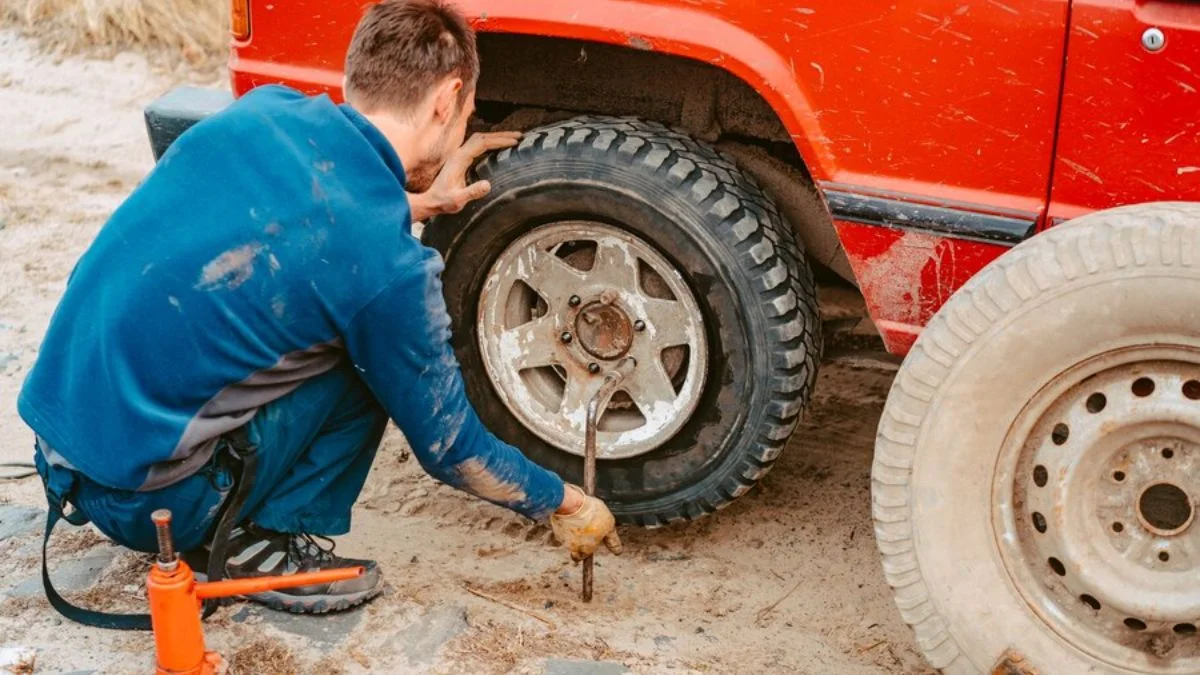Driving on bald tires is an extremely hazardous risk that significantly compromises your safety on the road. Tires with insufficient tread depth are more likely to slip, lose traction, and perform poorly, especially in wet or slippery conditions. This can lead to dangerous situations, such as skidding, hydroplaning, or even losing control of your vehicle. Inadequate tread reduces your tires’ ability to grip the road, increasing the likelihood of serious accidents.
Fortunately, checking your tire tread depth is a simple and quick process that can dramatically reduce the risk of accidents. Regular tire maintenance, including monitoring tread depth and ensuring proper inflation, is essential for safe driving.
The Importance of Proper Tire Tread Depth
Tire tread depth plays a crucial role in how well your vehicle handles on the road, especially in adverse weather conditions. Tread helps tires grip the surface, dispersing water and debris, which is essential for maintaining control of your vehicle. When your tires are bald or have worn tread, you lose that grip, increasing your chances of sliding, skidding, or even blowing out a tire.
Driving on worn tires can also lead to longer braking distances and less responsiveness, making it difficult to avoid potential hazards. Ultimately, poor tire maintenance can result in serious accidents that could lead to injuries and even the need for professional help from a car crash legal claims expert.
The Penny Test: A Quick and Easy Way to Check Tread Depth
One of the simplest methods to check your tire tread depth is the penny test. All you need is a penny, and you can quickly determine if your tires are still safe to use. Here’s how to do it:
- Insert a penny into the tire’s tread groove with Lincoln’s head facing down.
- If you can see the top of Lincoln’s head, your tire tread is worn, and it’s time to replace the tires.
- If the tread covers part of Lincoln’s head, your tires have enough depth for safe driving.
This quick test takes only a minute but can save you from the dangers of driving on bald tires. If you notice that your tires don’t pass the penny test, it’s important to replace them as soon as possible to avoid accidents and legal complications.
Understanding the Legal Minimum Tread Depth
In the U.S., the legal minimum tread depth is 2/32 of an inch. Once your tires have worn down to this level, they are considered unsafe and need to be replaced. Driving with tires below this limit not only puts you at risk of accidents but could also result in fines and penalties.
In many cases, insurance companies may deny claims for accidents caused by bald tires, as they consider it a form of negligence. If an accident occurs due to your failure to maintain your tires, you could face liability, making it critical to ensure your tires are always in good condition.
Regular Tire Inspections: A Key to Safety
Regularly inspecting your tires can help you catch wear and tear before it becomes a problem. Besides checking the tread depth with the penny test, you should also look for uneven wear, cracks, or bulges on your tires. Uneven tread wear can indicate other issues with your vehicle, such as misalignment or improper inflation.
Make it a habit to inspect your tires every month and before long road trips. Consistent maintenance will help you avoid accidents, improve your vehicle’s performance, and extend the life of your tires.
Tire Pressure and Tread Depth Go Hand-in-Hand
Tire pressure plays a crucial role in maintaining proper tread wear. Overinflated or underinflated tires can cause uneven tread wear, reducing the lifespan of your tires and increasing the risk of an accident. Check your tire pressure regularly and make sure it’s within the manufacturer’s recommended range. Most cars have a tire pressure guide inside the driver’s door or in the owner’s manual.
Proper tire pressure not only helps your tread wear evenly but also improves fuel efficiency and ensures a smoother ride. By maintaining both the tread depth and tire pressure, you’re reducing the risk of accidents and keeping your vehicle safe.
Investing in High-Quality Tires
While tires may seem like an area to save money, investing in high-quality tires can prevent costly accidents down the road. Premium tires with deep tread are designed for better performance, improved handling, and enhanced safety in various driving conditions. Cheaper tires may wear down more quickly, leaving you with bald tires sooner than expected.
High-quality tires may come at a higher initial cost, but they often last longer and perform better, helping you avoid accidents and the financial burden of repairs, medical bills, or legal challenges.
When to Replace Your Tires
Knowing when to replace your tires is key to keeping your vehicle safe on the road. As soon as your tires reach the 2/32-inch tread depth, or if you notice cracks, bulges, or excessive wear, it’s time to replace them. Don’t wait for a blowout or a skid to occur before taking action.
Staying proactive with tire replacements can help you avoid accidents and the potential need for legal recourse. Ensuring your tires are in good condition is one of the simplest yet most effective ways to protect yourself and others on the road.
Rotating Your Tires for Even Wear
Rotating your tires regularly is another essential practice to maintain even tread wear. Tire rotation involves switching the position of each tire on your vehicle to ensure that all tires wear down at a similar rate. Typically, front tires wear out faster than rear tires due to steering and braking forces. By rotating them every 5,000 to 8,000 miles, you can extend the lifespan of your tires and improve overall safety.
Uneven tire wear can lead to poor handling and increase the risk of accidents. Regular rotations not only improve safety but can also save you money by maximizing the life of your tires. If you’re unsure how often to rotate your tires, consult your vehicle’s manual or a professional mechanic.
The Role of Tire Alignment in Tread Wear
Tire alignment is another key factor in maintaining healthy tread depth and preventing premature tire wear. Misalignment occurs when your vehicle’s wheels are not properly aligned, causing uneven wear on your tires. Common signs of misalignment include your car pulling to one side, uneven tire wear, or a crooked steering wheel when driving straight.
Poor alignment can drastically reduce the life of your tires and lead to dangerous driving conditions. Regularly checking and correcting your vehicle’s alignment will help preserve your tire tread and keep you safe on the road. If you notice any signs of misalignment, it’s best to have a professional inspect and adjust your vehicle.
For more informaion click here.









